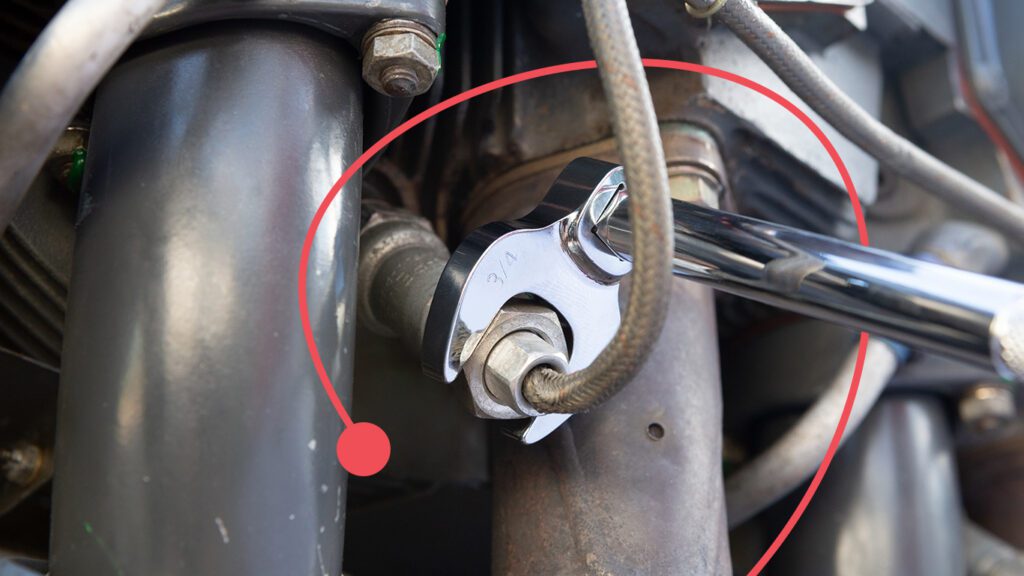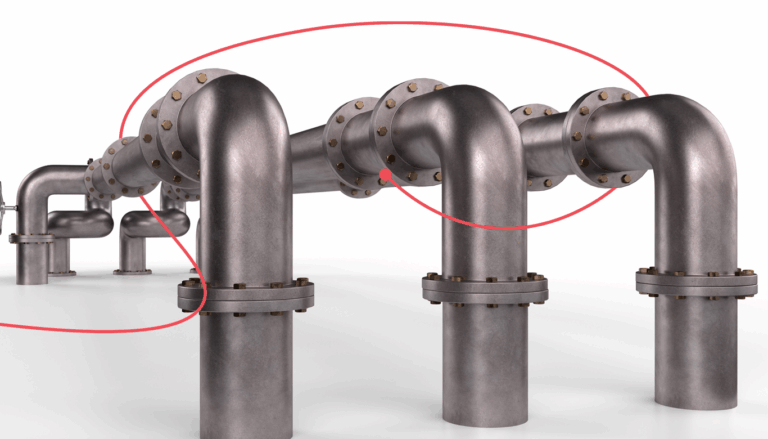Migrating to SAP S/4HANA has its challenges. The most significant challenge is dual maintenance between legacy systems and the new SAP S/4HANA environment. Unless you adopt a greenfield approach to your S/4HANA, you must support your systems until the migration is complete.
The objective of dual maintenance is to keep your legacy system and your SAP S/4HANA systems in sync to avoid change freezes and unscheduled downtime. An automated retrofit approach to your SAP S/4HANA migration significantly reduces the time, effort, and risk to ensure SAP changes are synchronized in parallel across the dual system landscapes.
A proper retrofit of SAP changes significantly increases the likelihood of a successful SAP S/4HANA go-live. Improper dual landscape synchronization and change adaptation could lead to system downgrades and disastrous results.
Rev-Trac Platinum, the SAP DevOps Platform, has built-in features that automate dual maintenance, accelerating the synchronization of SAP changes and significantly reducing the risk of unscheduled downtime. It allows you to effortlessly keep your legacy SAP landscape and new S/4HANA systems in sync until the final cutover.
In this blog, you will learn:
- What you need to consider when retrofitting SAP changes
- Why an automated retrofit approach is critical until you switch on your SAP S/4HANA system
- How to automate you retrofit process and accelerate your SAP S/4HANA migration with Rev-Trac Platinum

Keeping your legacy and SAP S/4HANA environments in sync helps to avoid costly downtime
Why retrofit automation is the key to a successful SAP S/4HANA migration
The challenge lies in balancing the upkeep of your legacy system while pivoting towards your migration to SAP S/4HANA. How do you overcome the challenge? The short answer is automated change synchronization.
When faced with the challenge of supporting an ECC system and building the new SAP S/4HANA environment, anything you can automate, you should. That includes automating the retrofit of your SAP changes to ensure dual maintenance while navigating your SAP S/4HANA journey.
System downgrades commonly occur when introducing changes or new functionality to the legacy system during an SAP S/4HANA migration. Transitioning is not a simple lift and shift.
The complexity of your ERP landscape and the collaboration between the teams involved can impact how quickly and safely you make the cutover. Industry experts predict at least 2-6 months through to 24+ months for organizations taking a measured approach to their SAP S/4HANA migration.
Whether you adopt a big bang approach or take it slow and steady, BAU changes and functional updates will inevitably be introduced into legacy systems. The types of changes and updates include:
- Functional Upgrade – introducing new functionality available on the BTP as part of your scope
- Technical Upgrade – make the minimum changes and introduce recent functional changes post go-live
It is essential to incorporate these changes or, at the very least, evaluate their inclusion in the new environment to prevent functional downgrades post-cutover. The recommended method utilizes an automated dual maintenance strategy, also known as a digital synchronization of SAP changes.
Get on the fast track to an automated retrofit approach to change synchronization
When you use one or more parallel development tracks, you must manage retrofits to ensure that transports migrated to production are added to each parallel track. Automating the retrofit of your SAP changes helps lower the risk, breaks down siloes, and accelerates your migration project.
With Rev-Trac Platinum, you can configure the software to clone SAP changes and updates automatically. The clone requests are evaluated for re-application (or retrofitting) to parallel development tracks, keeping systems in sync.
However, migrating to SAP S/4HANA has challenges when it comes to dual synchronization. It is critical to consider your custom code while transitioning to SAP S/4HANA. Will it be compatible with the new system or present a hurdle that could lead to costly downtime? This is where Rev-Trac Platinum proves invaluable.
Consider two scenarios:
SAP S/4HANA compatible custom code:
When you move to SAP S/4HANA, all changes that progress across your ECC should be run through ABAP Test Cockpit (ATC) to ensure it is suitable for use in the new environment.
Rev-Trac Platinum sends any changes introduced into production during the digital transformation project for review and automatic reapplication into SAP S/4HANA. Retrofitting becomes a simple accept/reject exercise, minimizing the effort and significantly reducing the risks to the SAP S/4HANA upgrade project.
Custom code incompatible with SAP S/4HANA:
However, not all custom code is compatible with an SAP S/4HANA system, which is where it becomes tricky. In this instance, an automated reapplication process is ruled out. It’s a challenge, but you don’t have to lose the associated functionality in the new environment.
Where code compatibility is an issue, Rev-Trac queues work orders generated from the legacy system for consideration in the new environment as an outstanding item. Doing so prevents a loss in functionality and ensures the incompatible code is reviewed for manual adjustment in the SAP S/4HANA system.
Dual maintenance and automated retrofit – other considerations
Whether you adopt a Bluefield or Brownfield approach to SAP S/4HANA, you must identify which ECC changes are candidates for reapplication into the new system.
When assessing changes to reapply to SAP S/4HANA, you have three options:
- No, I don’t need this change
- Yes, this change needs to go to production, and we can use the original ECC change
- I need this but can’t use the ECC change. I’m going to apply the change manually.
For reapplication to the SAP S/4HANA system, having a link back to the original ECC change is crucial. You need to understand how the change was implemented and its rationale. With Rev-Trac, every SAP change is linked to a request. A Rev-Trac Request is a group of transports, related documentation and approvals to manage a testable unit of change.
Mapping an ECC change to the future implementation in SAP S/4HANA ensures a link to the original request. Rev-Trac Platinum will synchronize these so that they remain intact.
While checking your custom code for compatibility when migrating to SAP S/4HANA is crucial, there are instances when you need to bypass the process. A flexible change management workflow process is of real value in these scenarios.
It enables SAP IT teams to cater for anomalies and variations that don’t allow for checks for compatibility and consistent reapplication to your new SAP S/4HANA system. For example, these are two instances when you would bypass safety checks and code suitability analysis:
- Emergency changes – these changes are needed in production immediately, so you don’t have time to run their SAP S/4HANA readiness check
- Configuration changes for Brownfield SAP S/4HANA transformation – these changes cannot be assessed for suitability in the target system and should be excluded for a speedy change process to production
What about SAP BTP?
Undoubtedly, some businesses will leverage SAP BTP to keep their core clean in their SAP S/4HANA environment. Keeping the core clean in this context means keeping the core SAP S/4HANA system free of customization. A clean core is essential for ensuring stable and reliable operations during the SAP S/4HANA build and post go-live.
Instead of retrofitting ECC changes to avoid losing the functionality in your S/4HANA systems, you would use native BTP capability for the requirement. While this is a possibility now, it’s expected that most custom code will be deployed to SAP S/4HANA rather than BTP. Code is likely more compatible between ECC and SAP S/4HANA than BTP, which will, in all probability, use alternative technologies to ABAP.
Bottom Line: Automatically retrofit SAP changes for a successful shift to SAP S/4HANA
For most organizations, an SAP S/4HANA migration involves maintaining your legacy ECC system for a period while focusing on building the new environment. Dual maintenance between your ECC and SAP S/4HANA systems minimizes costly unplanned downtime and helps keep your project on schedule. The foundation of dual maintenance is dual synchronization (or retrofit).
Rev-Trac Platinum, the SAP DevOps Platform, helps to keep your ECC and S/4HANA systems in sync while the new environment is built and tested. It does this by automating the retrofit process by selectively reapplying automatically cloned ECC changes to the parallel S4/HANA track. There’s less risk of costly mistakes, and required changes are delivered seamlessly across the two technology platforms.
In the next and final post in the series, “SAP S/4HANA migration made easy with automated change management”, I will look at the challenges of SAP S/4HANA migration and how it can impact time, resources, budgets, and business continuity.






